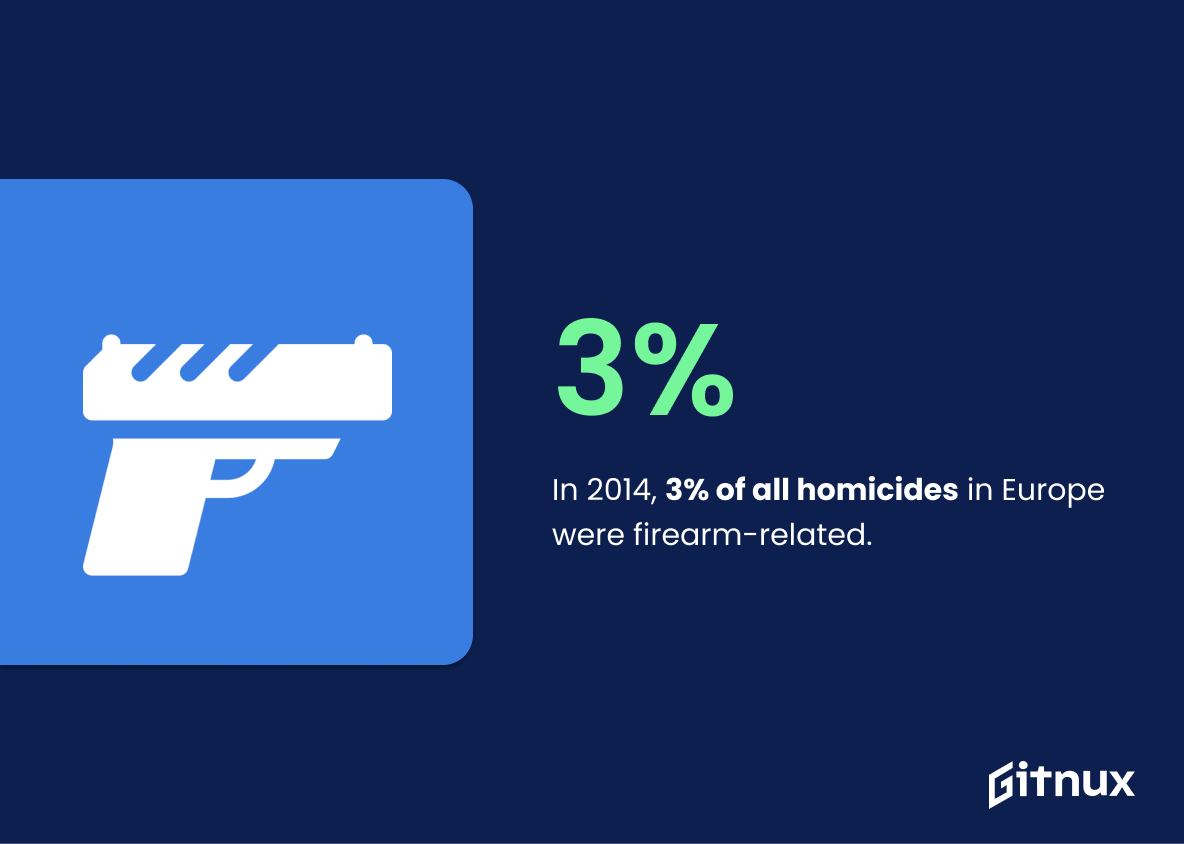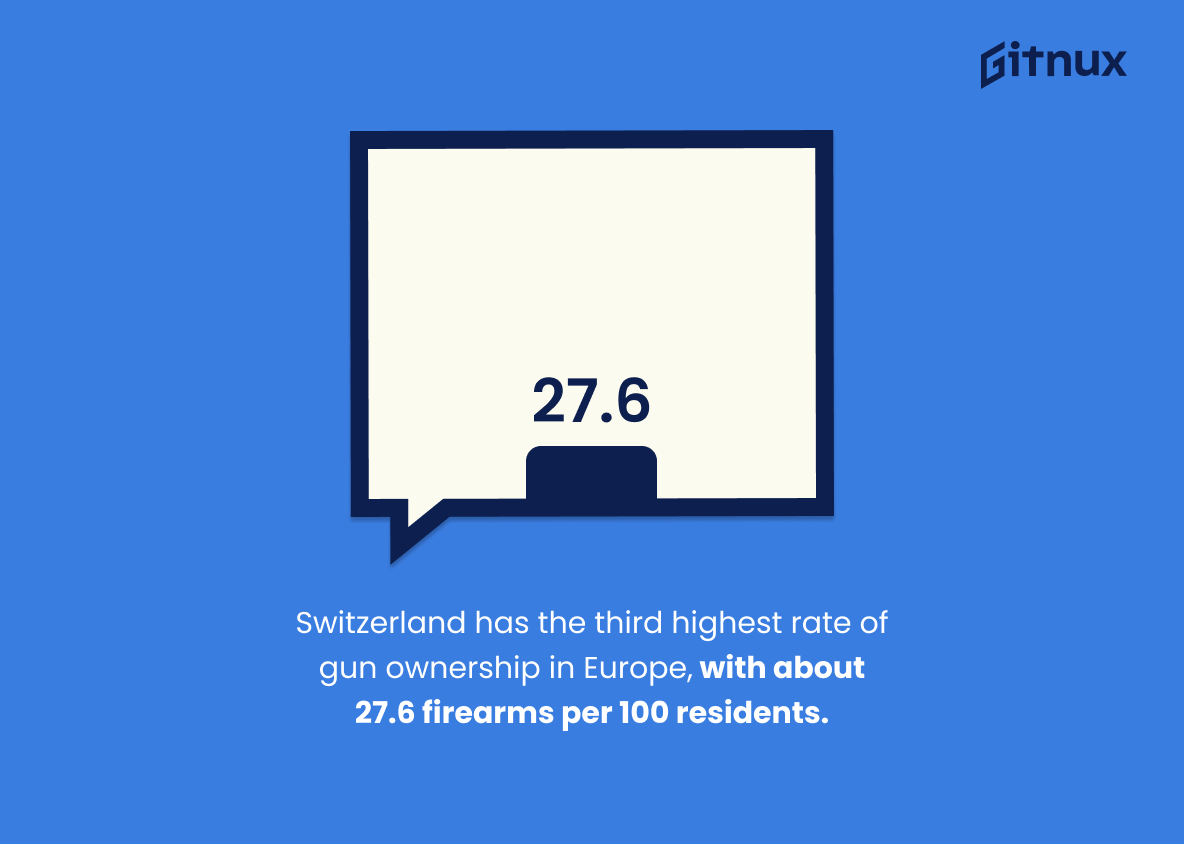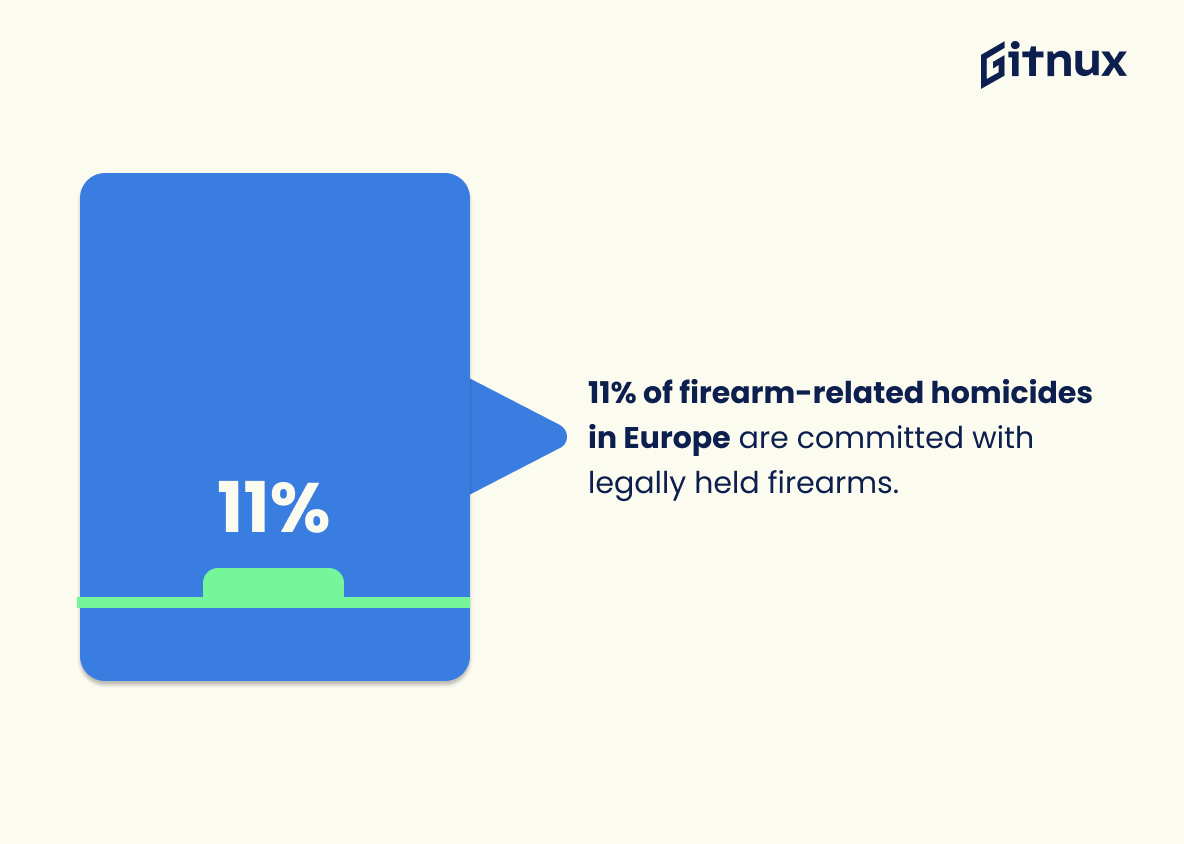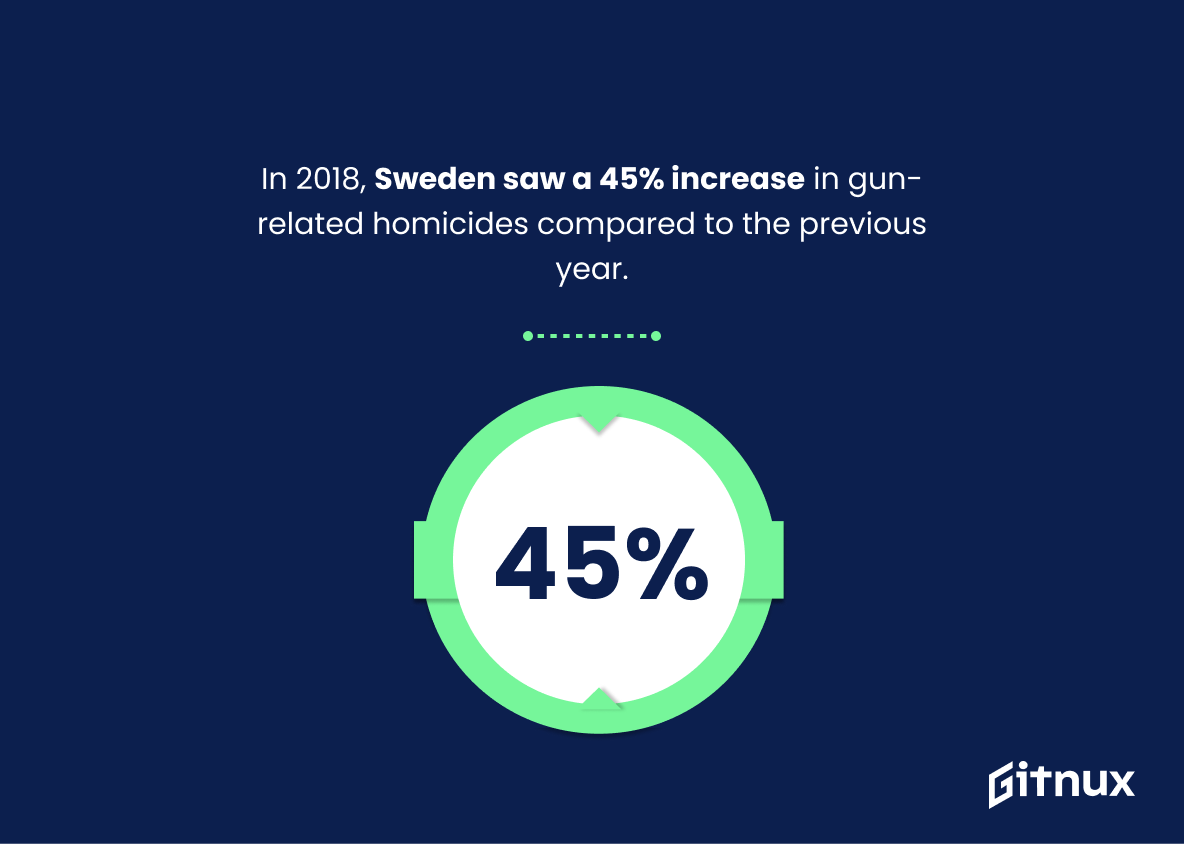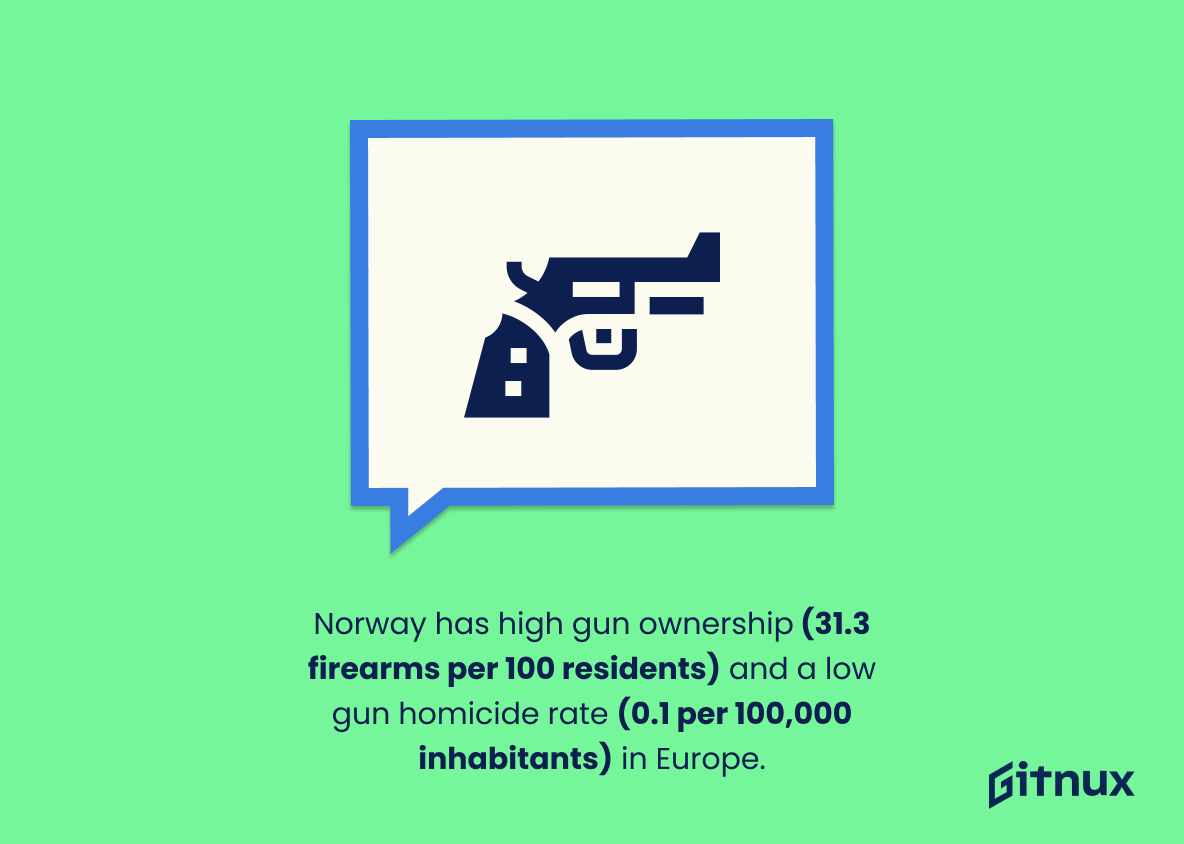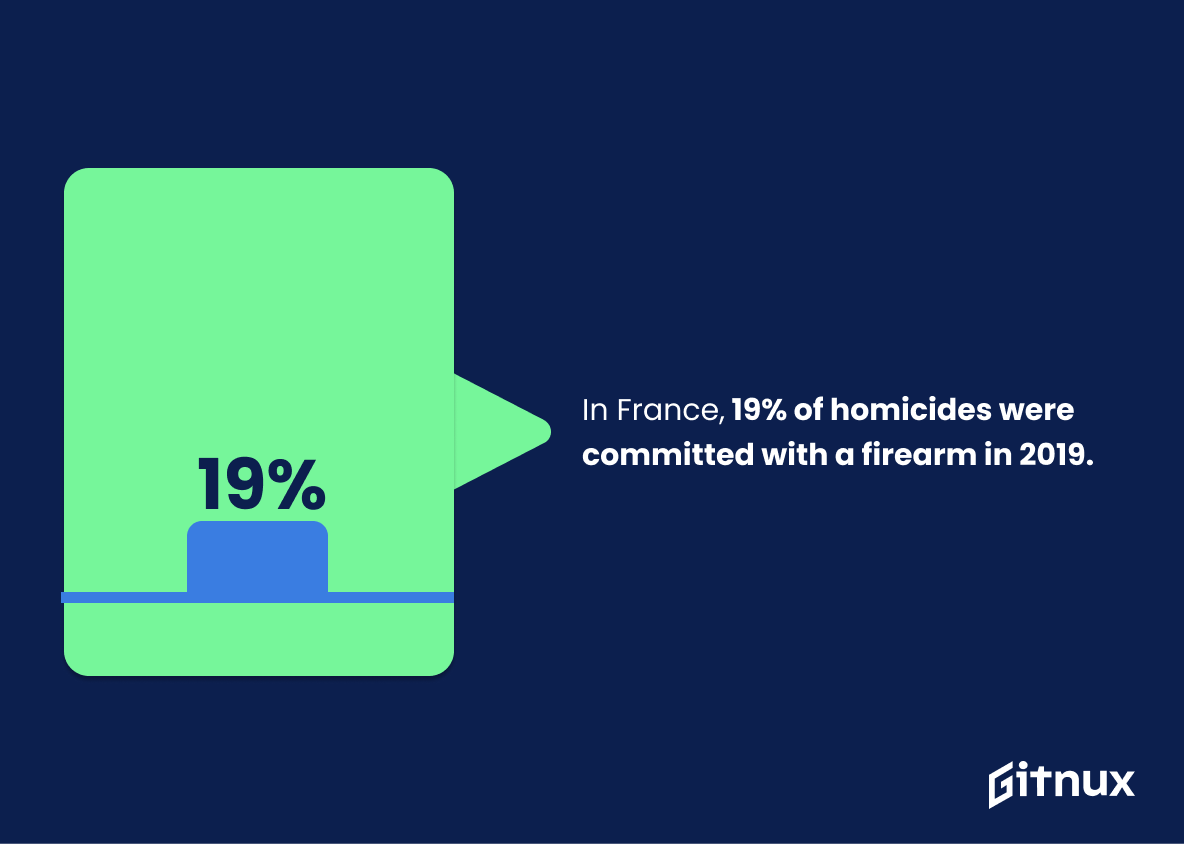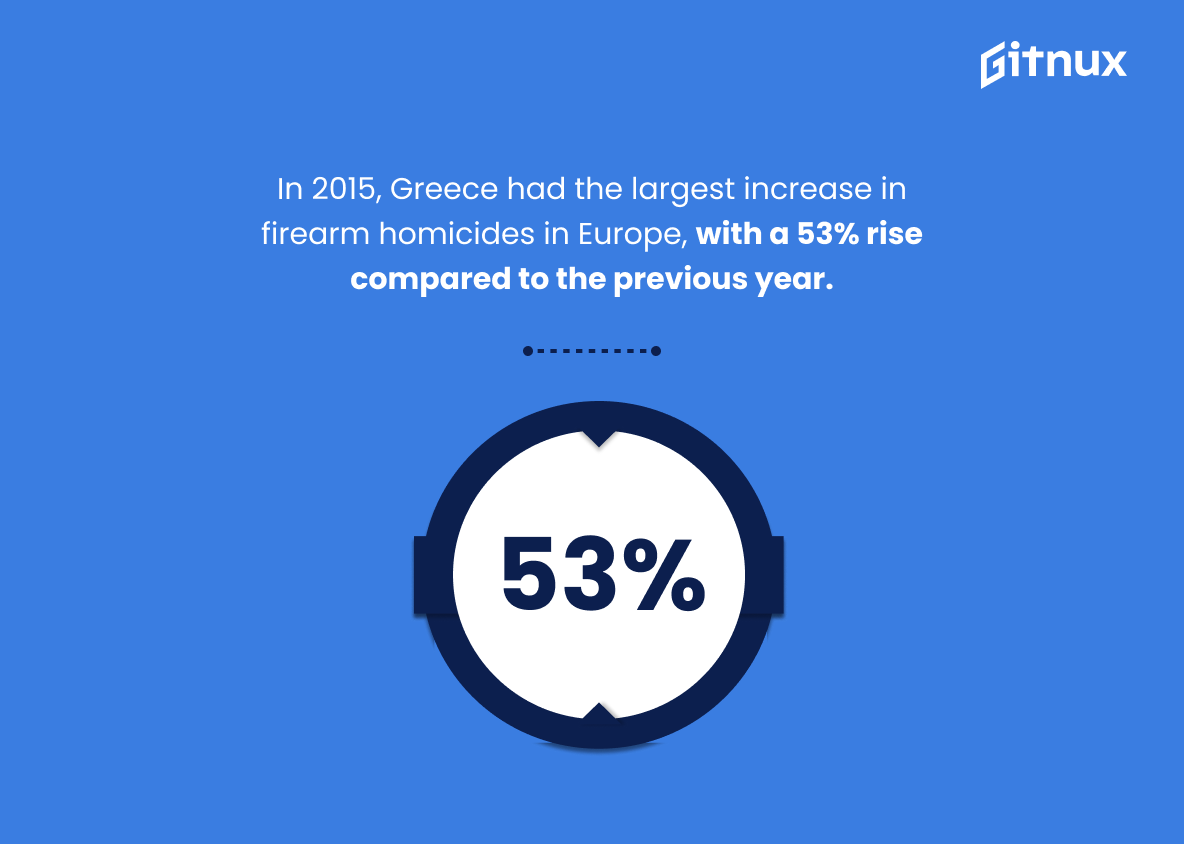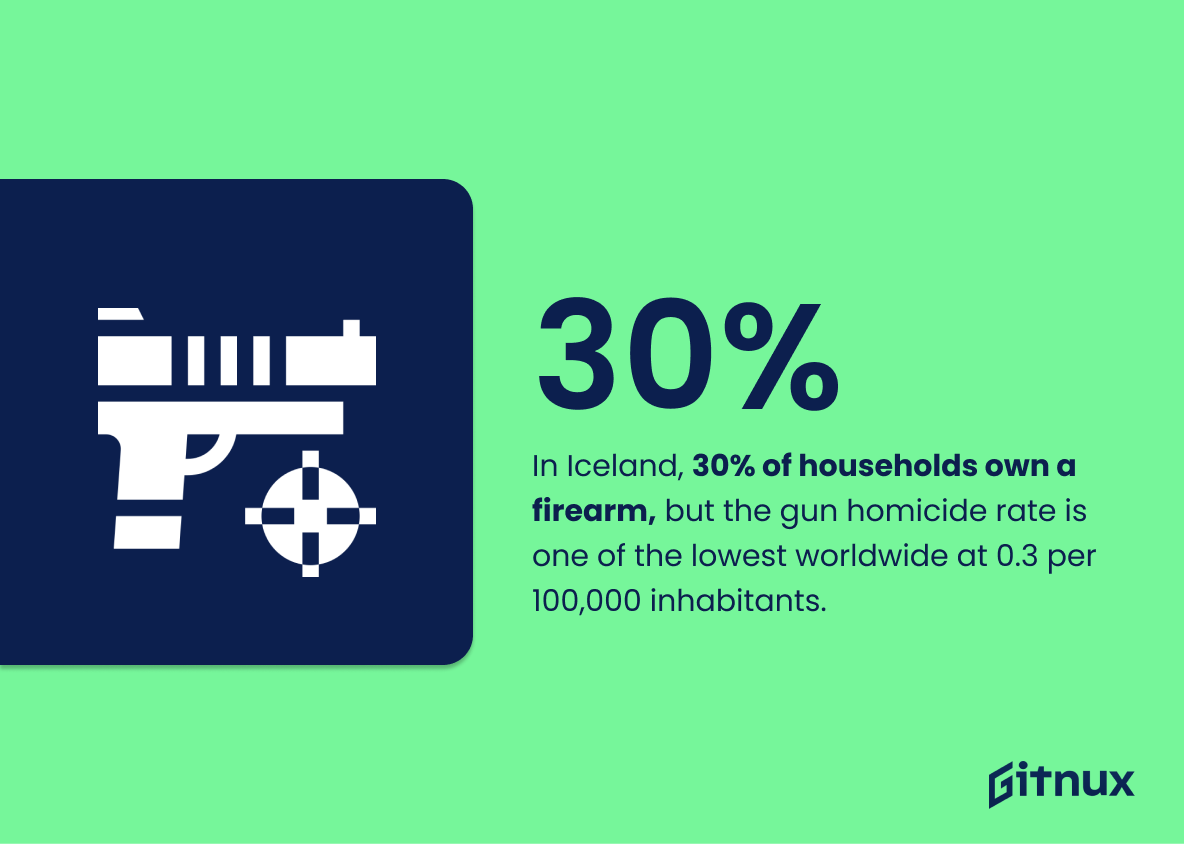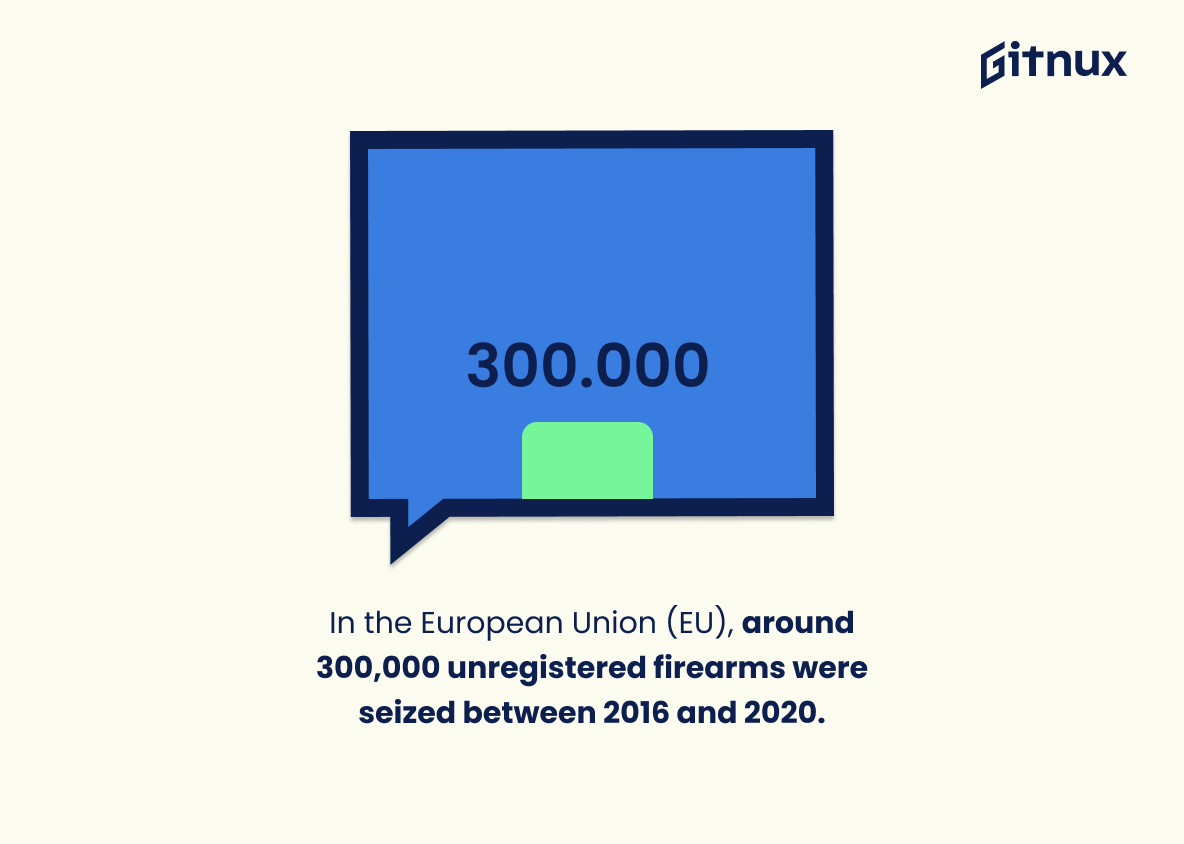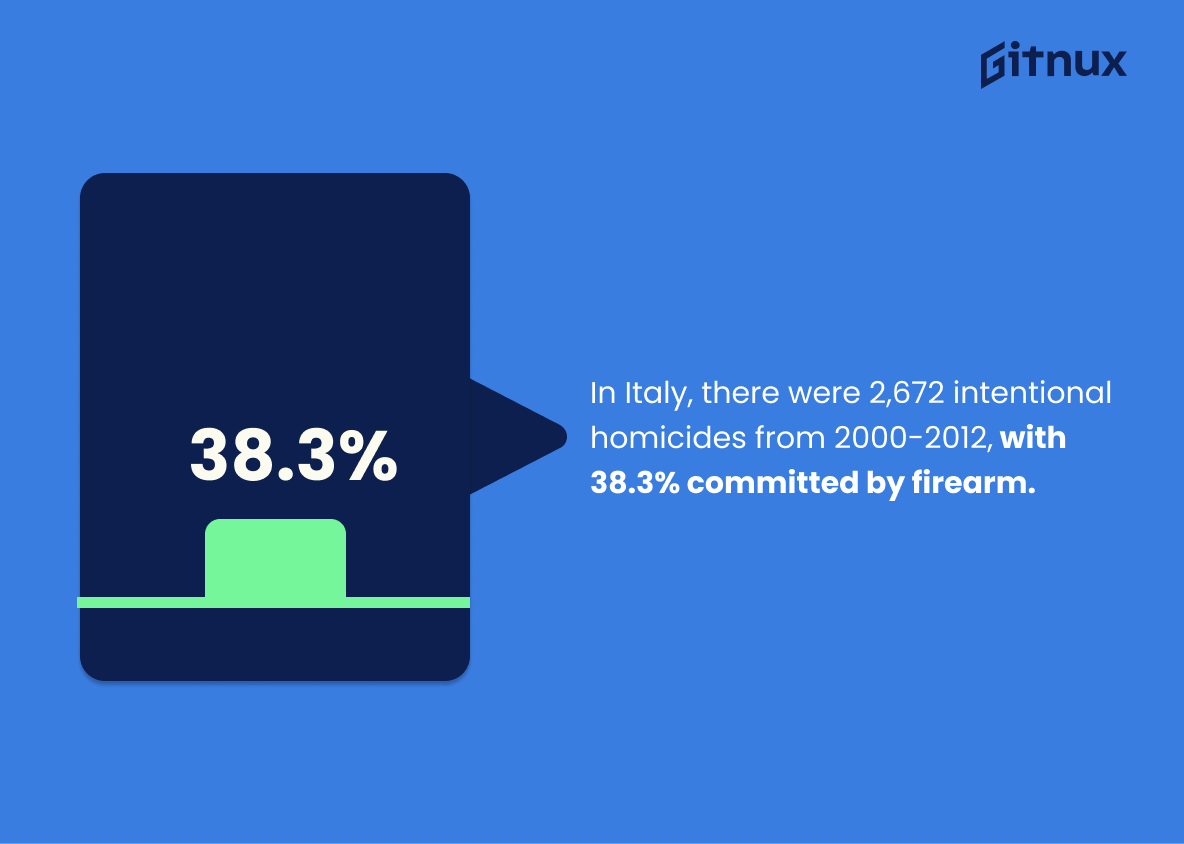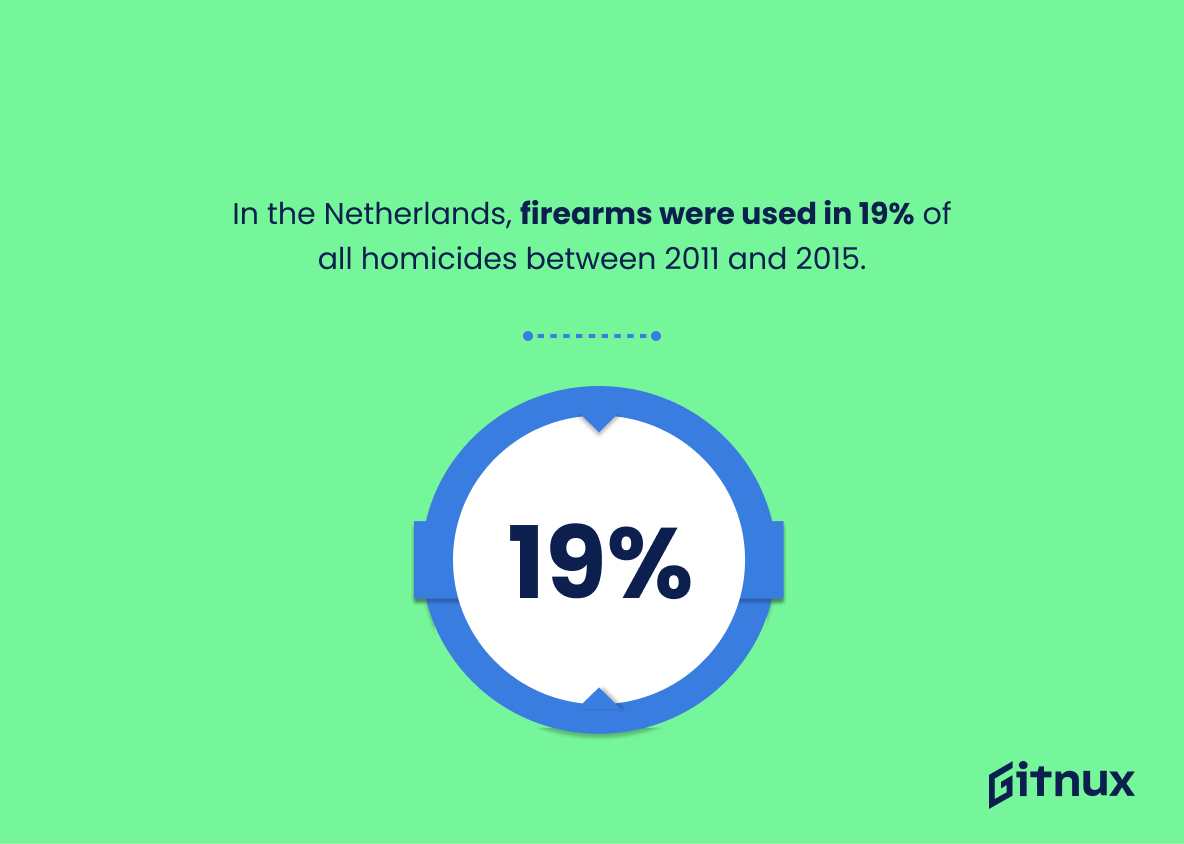Gun violence is a serious issue in Europe, with many countries having high rates of gun ownership and firearm-related homicides.
This blog post will explore the statistics on gun violence in Europe to gain insight into this important topic. We’ll look at data from various sources including government agencies, research organizations, and academic studies to examine the prevalence of firearms across different European countries as well as their impact on homicide rates.
Additionally, we’ll discuss recent regulations implemented by the European Union aimed at controlling access to guns and reducing violent crime.
This statistic is a powerful indicator of the prevalence of gun violence in Europe, demonstrating that even with strict gun control laws, gun homicides still occur at a rate of 0.7 per 100,000 inhabitants annually. It serves as a reminder that gun violence is still a major issue in Europe, and that more needs to be done to reduce the number of gun homicides.
The United Kingdom has one of the lowest rates of gun homicides in Europe at 0.04 per 100,000 inhabitants.
This statistic is a powerful reminder of the effectiveness of gun control in the United Kingdom. It serves as a testament to the fact that when gun laws are properly enforced, gun violence can be drastically reduced. This statistic is an important piece of evidence that can be used to support the argument that gun control is an effective way to reduce gun violence in Europe.
Gun Violence In Europe Statistics Overview
In 2014, 3% of all homicides in Europe were firearm-related.
This statistic is a powerful indicator of the prevalence of gun violence in Europe. It demonstrates that, despite the fact that firearms are not as widely available in Europe as they are in other parts of the world, they are still being used to commit a significant number of homicides. This statistic serves as a reminder that gun violence is a serious problem in Europe and that more needs to be done to address it.
Switzerland has the third highest rate of gun ownership in Europe, with about 27.6 firearms per 100 residents.
This statistic is a telling indicator of the prevalence of gun ownership in Switzerland, and thus the potential for gun violence in the country. It serves as a stark reminder that even in a country with a relatively low rate of gun violence, firearms are still widely available and accessible. This statistic is an important piece of the puzzle when it comes to understanding the scope of gun violence in Europe, and should be taken into consideration when discussing the issue.
In 2018, there were 1,209 gun violence incidents in Germany resulting in 137 deaths and 904 injuries.
This statistic serves as a stark reminder of the devastating impact of gun violence in Germany in 2018. It highlights the tragic loss of 137 lives and the 904 people who were injured as a result of gun violence. This statistic is a powerful illustration of the need for greater gun control measures in Europe to prevent further loss of life and injury.
11% of firearm-related homicides in Europe are committed with legally held firearms.
This statistic is a stark reminder of the potential danger of legally held firearms in Europe. It highlights the need for stricter gun control laws to ensure that firearms are not used to commit homicides. It also serves as a warning to those who may be considering purchasing a firearm, as it shows that even legally held firearms can be used to commit violent crimes.
In 2018, Sweden saw a 45% increase in gun-related homicides compared to the previous year.
This statistic is a stark reminder of the devastating effects of gun violence in Europe, particularly in Sweden. It highlights the urgent need for action to be taken to reduce gun-related homicides and to ensure the safety of citizens in the region. The 45% increase in gun-related homicides in 2018 is a clear indication that gun violence is a growing problem in Europe and must be addressed.
Serbia has the highest gun ownership rate in Europe with 39.7 firearms per 100 residents.
This statistic is a stark reminder of the prevalence of gun ownership in Serbia, and serves as a warning of the potential for gun violence in the country. It highlights the need for further research into the causes of gun violence in Europe, and the need for effective gun control measures to be implemented in order to reduce the risk of gun violence in the region.
Norway has one of the highest rates of gun ownership in Europe (31.3 firearms per 100 residents) but has a low gun homicide rate of 0.1 per 100,000 inhabitants.
This statistic serves as a powerful example of how gun ownership does not necessarily equate to gun violence. Norway’s high rate of gun ownership is a testament to the fact that gun control laws and regulations can be effective in reducing gun violence, even in a country with a high rate of gun ownership. This statistic is an important reminder that gun control measures can be effective in reducing gun violence, even in countries with high rates of gun ownership.
In Spain, the gun homicide rate declined by 63% between 2000 and 2011.
This statistic is a shining example of the positive impact that gun control can have on a nation. It shows that with the right policies in place, gun violence can be drastically reduced. This statistic is a testament to the fact that gun violence is not an inevitable part of life, and that it can be prevented with the right measures.
In France, 19% of homicides were committed with a firearm in 2019.
This statistic serves as a stark reminder of the prevalence of gun violence in France, highlighting the need for further action to be taken to reduce the number of homicides committed with firearms. It is a powerful illustration of the devastating impact that gun violence can have on a nation, and serves as a call to action for European countries to take steps to reduce the number of firearms in circulation.
In 2015, Greece had the largest increase in firearm homicides in Europe, with a 53% rise compared to the previous year.
This statistic is a stark reminder of the devastating effects of gun violence in Europe, particularly in Greece. It highlights the urgent need for more effective measures to be taken to reduce the number of firearm homicides in the region. The 53% increase in firearm homicides in Greece in 2015 is a stark reminder of the devastating consequences of gun violence and the need for more effective measures to be taken to reduce the number of firearm homicides in Europe.
In Iceland, 30% of households own a firearm, but the gun homicide rate is one of the lowest worldwide at 0.3 per 100,000 inhabitants.
This statistic serves as a powerful reminder that gun ownership does not necessarily equate to gun violence. It demonstrates that even with a high rate of gun ownership, Iceland has managed to maintain a low gun homicide rate, indicating that there are other factors at play in determining the level of gun violence in a country. This statistic is an important piece of evidence in the discussion of gun violence in Europe, as it suggests that gun control policies are not the only solution to reducing gun violence.
In the European Union (EU), around 300,000 unregistered firearms were seized between 2016 and 2020.
This statistic serves as a stark reminder of the prevalence of gun violence in Europe. It highlights the sheer number of unregistered firearms that have been seized in the EU over the past four years, demonstrating the magnitude of the issue and the need for further action to be taken to reduce gun violence in the region.
The European Union in 2017 implemented new regulations to control the acquisition and possession of firearms, including new limits on magazine capacity and easier sharing of data between member states.
The European Union’s 2017 regulations on firearms are a crucial step in the fight against gun violence in Europe. By limiting magazine capacity and facilitating data sharing between member states, the EU is taking a proactive stance in curbing the prevalence of gun violence in the region. This is an important statistic to consider when discussing gun violence in Europe, as it demonstrates the commitment of the EU to address the issue.
In Italy, there were 2,672 intentional homicides from 2000-2012, with 38.3% committed by firearm.
This statistic is a powerful indicator of the prevalence of gun violence in Italy, demonstrating that firearms are a major contributor to intentional homicides in the country. It is an important piece of evidence to consider when discussing gun violence in Europe, as it provides insight into the potential impact of gun control policies in the region.
In the Netherlands, firearms were used in 19% of all homicides between 2011 and 2015.
This statistic serves as a stark reminder of the prevalence of gun violence in the Netherlands, highlighting the need for further action to be taken to reduce the number of homicides involving firearms. It is a powerful illustration of the impact of gun violence in the country, and an important factor to consider when discussing gun violence in Europe.
In Croatia, there were 248 firearm-related homicides between 2000 and 2016.
This statistic serves as a stark reminder of the devastating impact of gun violence in Croatia over the past 16 years. It paints a vivid picture of the human cost of gun violence in the country, and highlights the urgent need for effective measures to reduce the number of firearm-related homicides.
In Austria, 12.3% of homicides were committed with a firearm in 2018.
This statistic is a powerful indicator of the prevalence of gun violence in Austria, demonstrating that firearms are a major factor in homicides in the country. It is an important piece of evidence to consider when discussing gun violence in Europe, as it provides insight into the potential danger posed by firearms in the region.
Conclusion
The statistics presented in this blog post demonstrate that gun violence is a serious issue across Europe. While some countries have lower rates of gun homicides than others, the overall rate remains high and firearm-related deaths are still common. The European Union has implemented new regulations to control firearms acquisition and possession, but more needs to be done to reduce the prevalence of gun violence in Europe.
References
0. – https://www.who.int
1. – https://www.bka.de
2. – https://www.ec.europa.eu
3. – https://www.kaggle.com
4. – https://www.smallarmssurvey.org
5. – https://www.rand.org
6. – https://www.eur-lex.europa.eu
7. – https://www.researchgate.net
8. – https://www.insee.fr
9. – https://www.bmi.gv.at
10. – https://www.gunpolicy.org
11. – https://www.dataunodc.un.org
12. – https://www.ons.gov.uk
